calsfoundation@cals.org
Marked Tree (Poinsett County)
| Latitude and Longitude: | 35°31’58″N 090°25’14″W |
| Elevation: | 215 feet |
| Area: | 5.77 square miles (2020 Census) |
| Population: | 2,286 (2020 Census) |
| Incorporated: | July 8, 1897 |
Historical Population as per the U.S. Census:
|
1810 |
1820 |
1830 |
1840 |
1850 |
1860 |
1870 |
1880 |
1890 |
1900 |
|
– |
– |
– |
– |
– |
– |
– |
– |
– |
352 |
|
1910 |
1920 |
1930 |
1940 |
1950 |
1960 |
1970 |
1980 |
1990 |
2000 |
|
2,026 |
1,318 |
2,276 |
2,685 |
2,878 |
3,216 |
3,229 |
3,201 |
3,100 |
2,800 |
|
2010 |
2020 | ||||||||
|
2,566 |
2,286 |
Marked Tree is a small town in Poinsett County in the northeastern part of Arkansas. It is possibly the only town in the world with the name Marked Tree. It is also unique because it is located between two rivers, the St. Francis River and the Little River, which, in some places, are only a quarter of a mile away from each other yet flow in opposite directions. Marked Tree is perhaps best known for the Marked Tree Lock and Siphons, just a few miles out of the city limits, which were constructed for flood control and are on the National Register of Historic Places.
Post Reconstruction through the Gilded Age
Poinsett County was formed on February 28, 1838, but at that time, there were no incorporated towns and very few settlers. The area was complete wilderness until the Kansas City, Fort Scott and Gulf railroad, later known as the Frisco Railroad, was built, bringing railroad workers to Marked Tree and the surrounding area. Construction went on from 1881 to 1883. The Frisco depot was torn down in 1981.
Jonathan C. Edwards was the work camp manager. He applied for a post office, and the post office was established on March 26, 1883, originally in an abandoned steamboat tied to the depot. Edwards was appointed the first postmaster. In the 1880s, about 142 people lived in the area around Marked Tree, and over 100 of them were railroad workers. By 1890, however, the first sawmills were built, beginning what would be Marked Tree’s biggest industry for the next few decades.
The town was named Marked Tree for an oak tree marked with a foot-high “M” that used to be on the bank of the Little River. There are two possible explanations as to who marked it. One is that it was marked in the 1830s by a member of John Murrell’s band of outlaws from the area of Jackson, Tennessee. They stole horses and sometimes even slaves from Kentucky and Tennessee and brought them through Arkansas to Oklahoma and Texas.
A less likely theory is that the Indians marked the tree. Osages who lived further north, in Missouri, hunted in the Marked Tree area for many generations. Delaware and Shawnee also had communities in northeast Arkansas briefly during territorial times. Although the marked tree for which the town was named fell into the river during a flood in 1890, a tree was found in the river in 1971 that is believed to be the same tree. It is on display in Marked Tree with a historical marker.
In 1887, Ernest Ritter headed a movement to incorporate Marked Tree as a town. On July 6, 1897, the petition was granted. An election was held on August 17, 1897, and John Krier was elected to be the first mayor. In 1889, Ritter Jr. founded E. Ritter & Company.
Unfortunately, as a result of the New Madrid Earthquakes of 1811–1812, much of the land had sunken down as much as nine feet in some places, and the “sunken lands,” as they were called, flooded every spring, making farming impossible. The situation was improved in 1893, when the first steps were made toward building levees. The St. Francis Valley was created by the earthquakes also, and so was the St. Francis Lake, six miles north of Marked Tree.
One of the earliest successful sawmills was the Oliver Davis sawmill, which was bought by John and William Fuller from Newborn, Tennessee, in 1891, and later by the Papka Light Lumber Company of Chicago, Illinois. Ritter also had a sawmill for a while. The biggest sawmill was the one owned by Chapman and Dewey Lumber Company. In 1890, they bought the property of a sawmill formerly owned by a Mr. Harding of Sioux City, Iowa. By 1893, the Chapman and Dewey Lumber Company had over 100,000 acres of land across Arkansas and 30,000 acres in Poinsett County. At the turn of the century, they were the chief employers in Marked Tree. Although a privately owned electricity plant had been built in 1898, the Chapman and Dewey Lumber Company installed the first electric plant for the general public in Marked Tree.
On a Sunday night in July 1894, there was a riot in Marked Tree. Feeling that they were being deprived of jobs, a group of white men targeted local African Americans and the people who had hired them. The black citizens had apparently expected trouble, because they were all barricaded inside their own houses. Although over 500 shots were fired, nobody was killed.
At the time of the 1900 census, 181 adult males lived in Marked Tree, and ninety-six of them, about fifty-three percent, were sawmill workers. There were only eighty-five women and eighty-five children. At that time, there were about ten black households in the Delta area of Poinsett County.
Early Twentieth Century
The Chapman and Dewey Lumber Company was hurt by a major fire in 1902. The fire began during the midnight meal break of the night workers, the day after a strike had been settled. The company had agreed to the workers’ terms, but only for white workers. Some people believed that the fire was deliberately set by angry black workers, but there is no evidence to support that theory. The company had employed about 300 men, but due to the losses, it had to fire about half of them.
On October 4, 1904, a group of landowners including Ernest Ritter and W. B. Miller, who was later to become chairman of the St. Francis Levee Board, petitioned for drainage districts in Poinsett County. The engineer made his report on January 9, 1905. The only opposition raised was, strangely, from Ritter himself, but in the end the drainage ditches were dug. Marked Tree was in Drainage District Seven, which had 164,000 acres of land, although it later expanded to include 190,000 acres.
The earliest churches in Marked Tree were built around the turn of the century. One early church was a Methodist church built in 1908; a new Methodist church was built in 1926. An Episcopal church was built in 1908, but the building was later sold to the Baptists. The early churches were segregated, and for the black community, there was the Anderson Chapel Baptist, organized in 1894, and later a Methodist church and another Baptist church.
Between 1900 and 1910, Marked Tree had its main roads paved or graveled, some sidewalks were laid, housing subdivisions were built, and churches and schools expanded. The population grew to well over 1,000. After nearly a decade of political controversy, saloons were closed in 1916. Most of the major roads in the Delta area of Poinsett County centered around Marked Tree, and when the county courthouse in Harrisburg (Poinsett County) burned down on May 4, 1917, many people thought it should be moved to Marked Tree. Instead, the county courthouse remained in Harrisburg.
In 1912, 1913, 1927, and 1937, the levees broke and flooded the town. The Flood of 1927 was particularly bad. The levees in Marked Tree broke on April 15, and much of the town was underwater for much of the spring and early summer. The crops that year were destroyed.
In response, the Marked Tree Lock and Siphons were built to control flooding and to provide transportation along the St. Francis River. They are of historical significance because they were important elements of the St. Francis River Basin Flood Control Project and the U.S. Corps of Engineers’ flood control plan for the Mississippi River Valley, and according to the Corps of Engineers, they are unique in architectural achievement. The lock was completed in 1926. It is about nine miles away from Marked Tree, on an abandoned artificial channel of the St. Francis River. The siphons are used to control water flow on the St. Francis River. The tubes are nine feet in diameter and 229 feet long. They are located 646 feet away from the lock, over a closing levee. They began operation on June 7, 1939.
World War II through the Modern Era
In World War II, a German prisoner-of-war camp was housed in Marked Tree, one of two in Poinsett County. During the war, the German prisoners did farm work, and they returned to Germany after the war.
The Marked Tree Public Library began in 1938. The Fire Department was established in 1947, and city mail delivery began in 1952.
Constructed in 1939 by the Memphis District Corps of Engineers for Drainage District Number Seven of Poinsett County, the Marked Tree Siphons were an integral part of the St. Francis River Basin Flood Control Project.
The population of Marked Tree grew steadily during the first half of the twentieth century, and by the 1960s, it was over 3,000 people. Since then, the population has decreased, with the 2010 census recording 2,566 people in the town.
Education
Before 1901, the only public school for the children of Marked Tree was about one mile out of town in a building called Woodman Hall. In 1901, the first public school within Marked Tree began. A new building was built in 1906, and in 1914, a three-story brick building was built to house the school. In 1914, the high school began; it was remodeled in the summer of 1949. A new elementary school was built in 1937. It later became the middle school but burned down in 1978. A new elementary school was built in 1957. In September 1938, a school started for black children. It had six classrooms. The schools were desegregated in 1966.
Today, Marked Tree is home to the Arkansas State University Technical Center, formerly the Delta Technical Institute.
Industry
The main industries of Marked Tree have been farming and lumber. Before levees were built in the 1890s, farming was very difficult because of floods, but for the last century, cotton, soybeans, rice, and corn have all grown in Poinsett County. A cotton gin was built in 1905, and cotton began to be profitable then. Through the 1920s, cotton was by far the biggest crop industry, but by the 1940s, corn was also very profitable.
Attractions
In 1993, the Marked Tree Delta Area Museum opened. It has 5,000 square feet and includes exhibits on Indian pottery, some of which is 700 years old; telephones from the early 1900s; and a four-room replication of the old Verser Hospital in Harrisburg.
The St. Francis Sunken Lands Wildlife Management Area is near Marked Tree. The St. Francis River is a popular place for fishing and hunting waterfowl.
Notable Figures
The great granddaughter of founder Ernest Ritter Jr., Mary Ann Ritter Arnold took over as president of E. Ritter & Company in 1976. She has also served as Marked Tree’s mayor.
For additional information:
Poinsett County, Arkansas: History and Families. Paducah, KY: Turner Publishing Company, 1998.
Ritter, Anna. “Marked Tree from 1883 to 1936.” Craighead County Historical Quarterly 5 (Winter 1967): 24–27.
———. “Marked Tree from 1883 to 1936, Part II.” Craighead County Historical Quarterly 5 (Spring 1967): 24–28.
———. “Marked Tree from 1883 to 1936, Part III.” Craighead County Historical Quarterly 5 (Summer 1967): 26–29.
Whayne, Jeannie M. “Caging the Blind Tiger: Race, Class, and Family in the Battle for Prohibition in Small Town Arkansas.” Arkansas Historical Quarterly 71 (Spring 2012): 44–60.
———. A New Plantation South: Land, Labor, and Federal Favor in Twentieth-Century Arkansas. Charlottesville: University Press of Virginia, 1996.
Magdalena Teske
North Little Rock, Arkansas
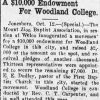

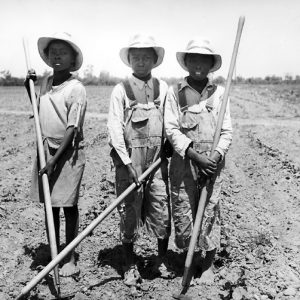 Chopping Cotton
Chopping Cotton 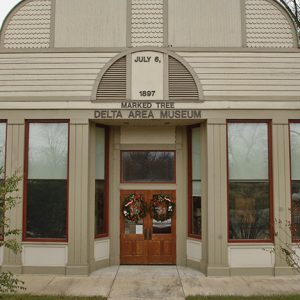 Delta Area Museum
Delta Area Museum 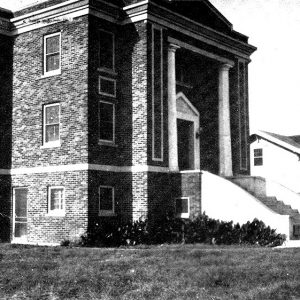 First Baptist Church
First Baptist Church 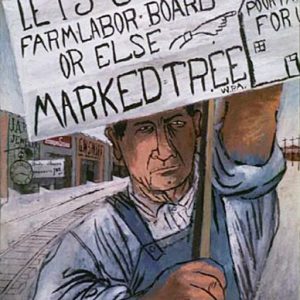 Lest We Forget by Ben Shahn
Lest We Forget by Ben Shahn 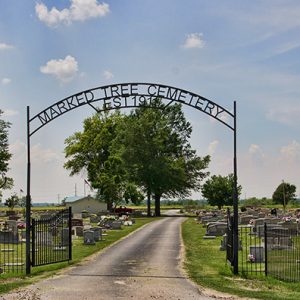 Marked Tree Cemetery
Marked Tree Cemetery 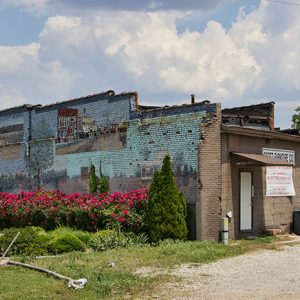 Marked Tree Mural
Marked Tree Mural 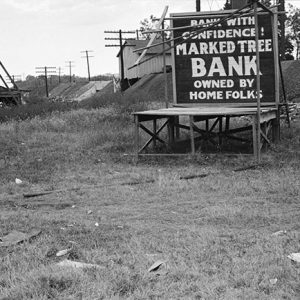 Marked Tree Businesses
Marked Tree Businesses 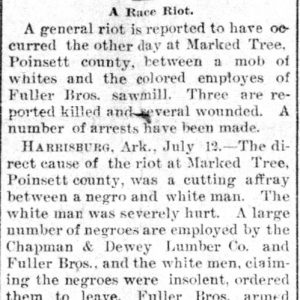 Marked Tree Race Riot Story
Marked Tree Race Riot Story 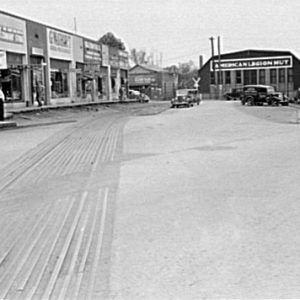 Marked Tree Street Scene
Marked Tree Street Scene 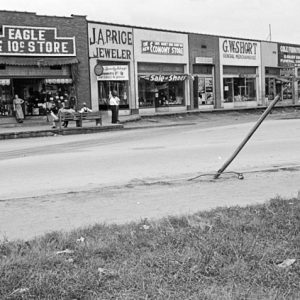 Marked Tree Street Scene
Marked Tree Street Scene 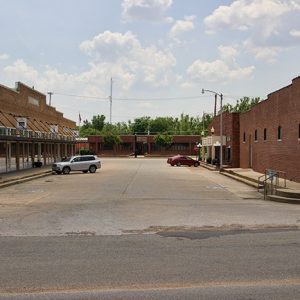 Marked Tree Street Scene
Marked Tree Street Scene 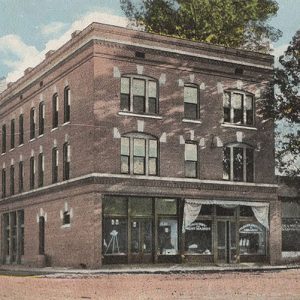 Marked Tree Street Scene
Marked Tree Street Scene 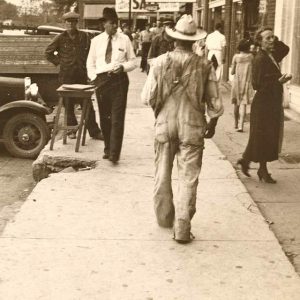 Marked Tree Street Scene
Marked Tree Street Scene 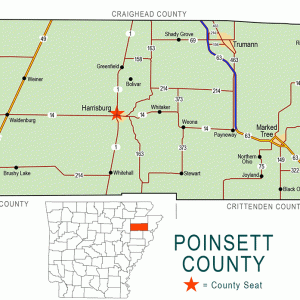 Poinsett County Map
Poinsett County Map 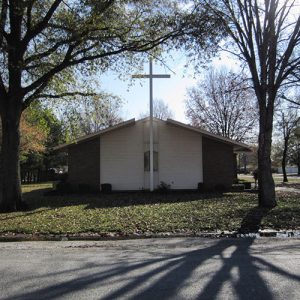 St. Norbert’s Catholic Church
St. Norbert’s Catholic Church 



I enjoyed reading this article. I am a great-grandson of W. C. Dewey and grandson of Chapman Dewey, who both were involved with Chapman & Dewey a very long time ago. The Dewey family continued to have a small farm in the area until the early 2000s. The few remaining Dewey descendants now live in Memphis.
My mom and dad grew up in Marked Tree: Jack Nichols and Dorthia Scott. They married and had three girls: my older sister Cindy, myself (Mary Beth), and Margie Nichols. Dad died of a heart attack at twenty-five. Our grandfather Richard Scott was the operator at the lock and dam (1938-1965), and my other grandfather L. W. (Boots) Nichols was a supervisor farmer (1940s-1970) for Ritter and Sons. My grandmother Scott worked at the clothing store called Schonberger’s and ran a small restaurant called Scotty’s Cafe. My uncle Lonnie Scott and his wife Reba owned the Scott Furniture Store, with sons Billy and Michael Scott. My uncle Harold Nichols and his wife Gloria Jean (Jeannie) owned a Sears store there. I visited Marked Tree in 2023 for a cousin’s funeral, Steve Nichols. It’s so abandoned now as from what I remember of it as a child and young adult. Marked Tree was my childhood home.
Both my parents are from Marked Tree: Father Jerry Carter, Mother Judy Rollins-Carter. I have plenty of family still living there.
My family in Marked Tree were the McNeary family. My mom’s name was Mosella Ruth McNeary, born 1948, my grandmother was Eva McNeary, and my grandfather was Alonzo McNeary. Aunts Joyce, Bernice, Jean, Joann; Uncles Raymond, Kitty, and Alonzo.
My father Roy Blackwell was born in Marked Tree in 1920. His dad’s name was James Ira Blackwell. His mother’s name was Leslie; don’t know her maiden name. She passed away when my Dad was five. She was Native American from Oklahoma.
My father’s family (surname: Perry) lived there as sharecroppers. They packed up their car and relocated to Michigan after the big flood. I hope to visit one day.
My father was a U.S. Army sergeant and served as a guard for German POWs at Marked Tree. He would always talk of the security, the responsibilities, and how alert they had to be at all times. He always regretted not serving overseas, but I shared my experiences as a (2X) U.S. Marine Corps, Vietnam veteran for respect and love for my dad.
My siblings and I were born in Marked Tree in the mid-1960s. We lived there until we moved to southern Arkansas in the early 1980s. We grew up in the projects of the city. Our school held all ages from start to finish, all in the same building. Grades 1st-12th. There was one drugstore and no restaurants. There was only one business, called the Cow Bar, to buy burgers and fries and such. Cotton was the main crop. There was one courthouse in the middle of town. The huge “marked tree,” in reference to the marked M on it, was centered around the road near the railroad crossing running through the middle of the main street downtown. There was one firehouse that was stationed on Fench street near the projects where we lived for the most part. There were only two stores for which to buy school clothes and such named Schonberger’s. In front of the drugstore was a small black mechanical horse to get on and ride that cost 5 cents. My grandfather, J. W. Clark, had the only used furniture store in which he helped many people furnish their homes, and for charity too. I loved my childhood there and think of Marked Tree often. Those were the peaceful days and safer times. But I don’t miss the mosquitoes that ran you indoors come dusk to dark. I miss my childhood home.
I enjoyed reading about the history of Marked Tree; my father was born there. My grandfather worked at Dewey and Chapman lumber mill as a saw filer and millwright.